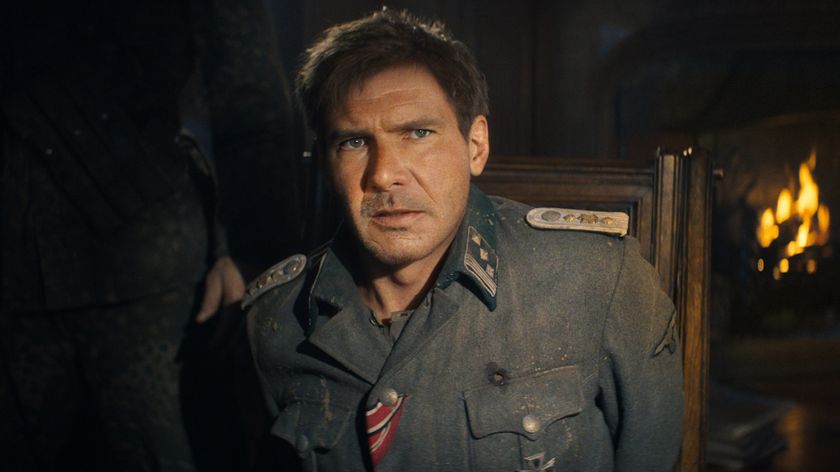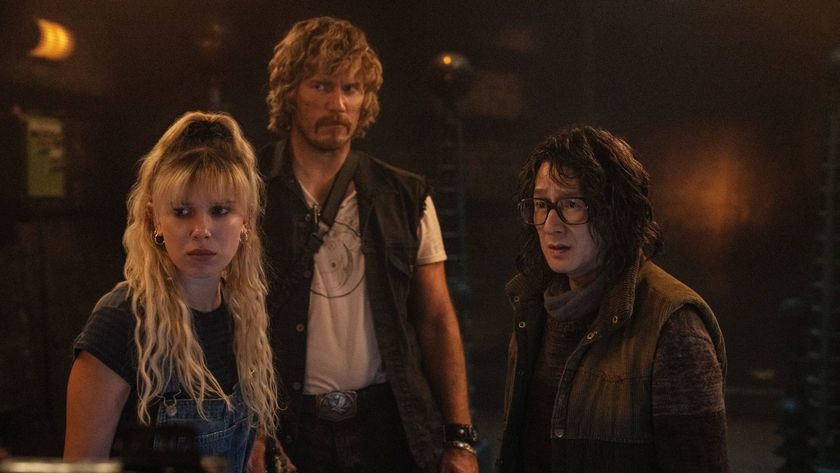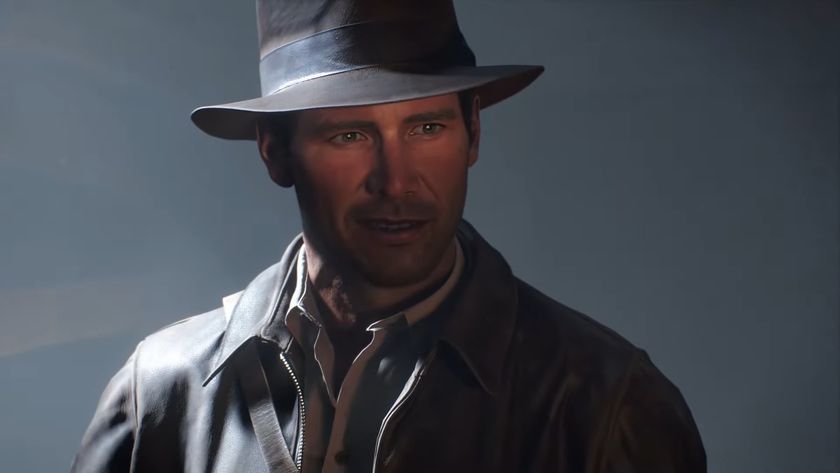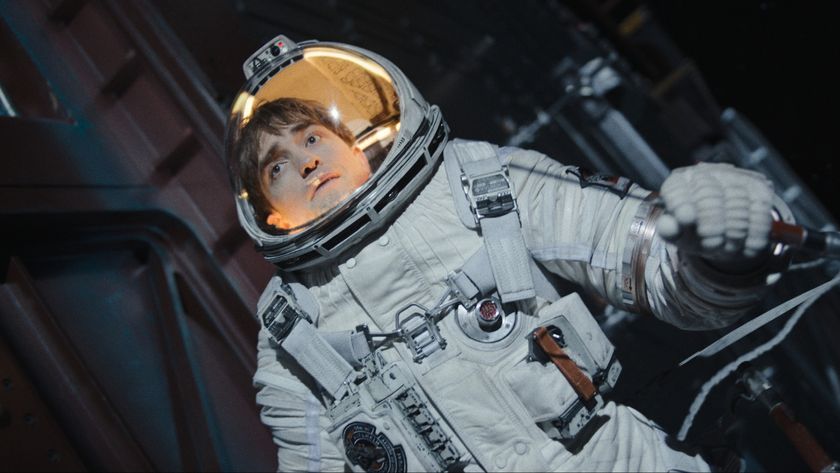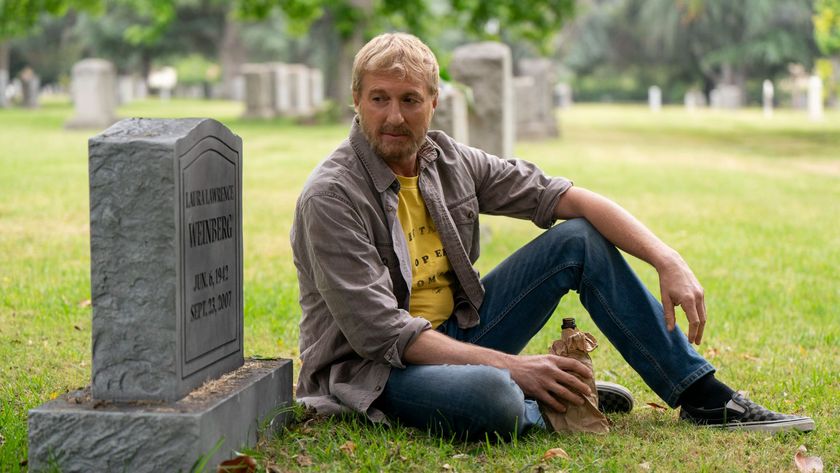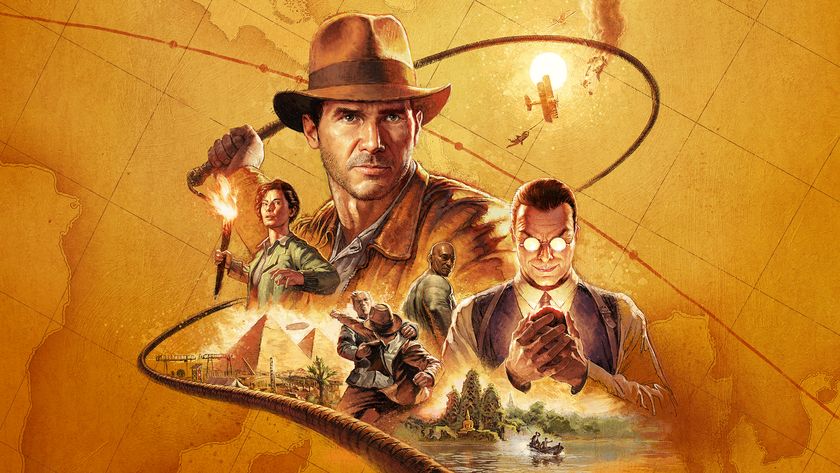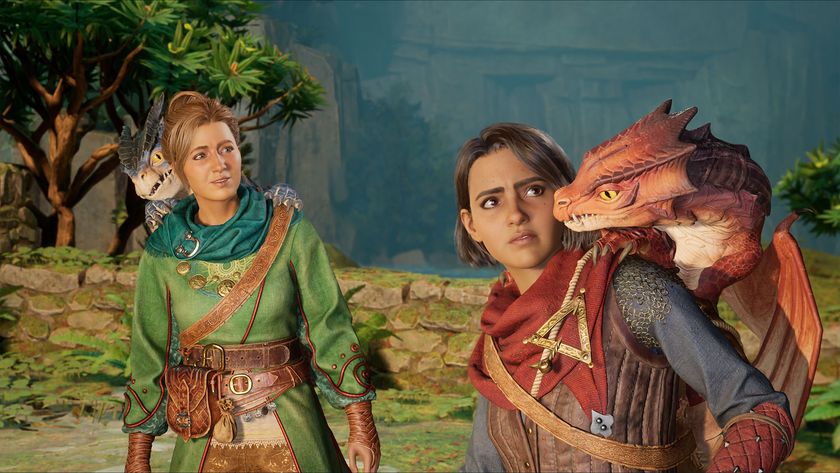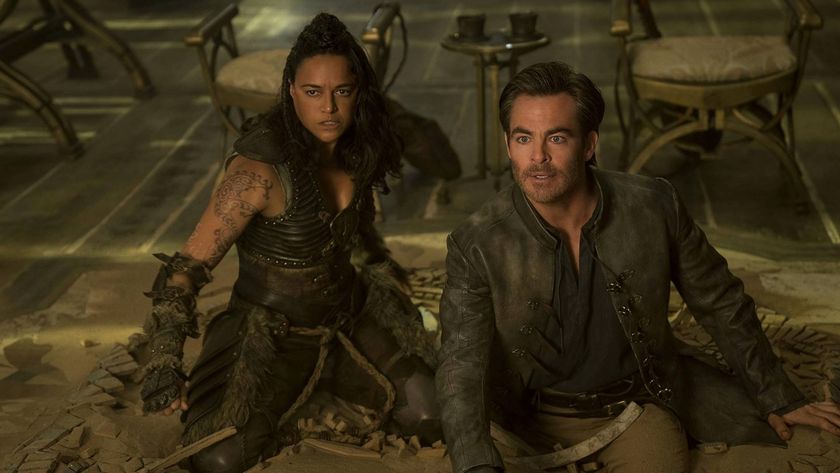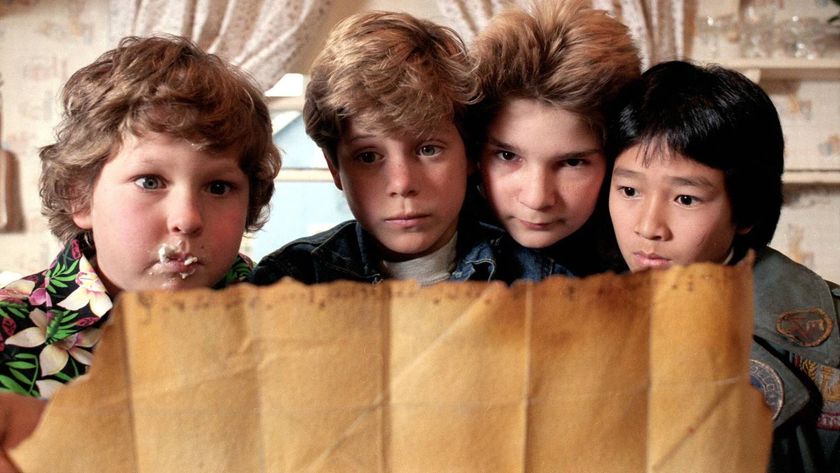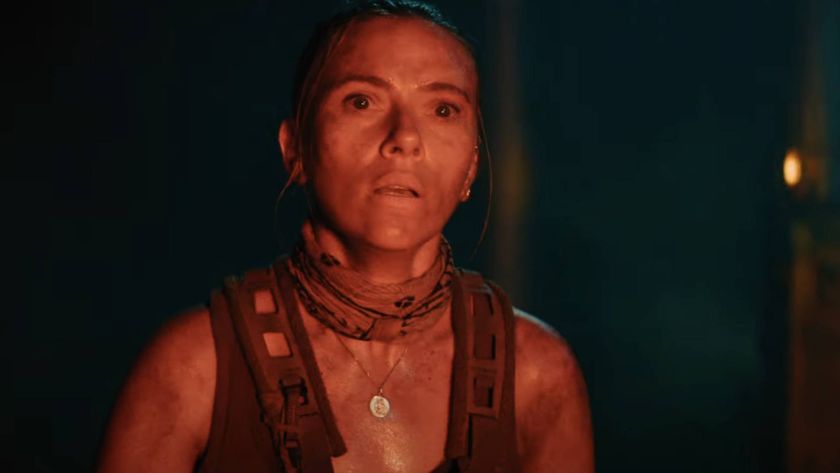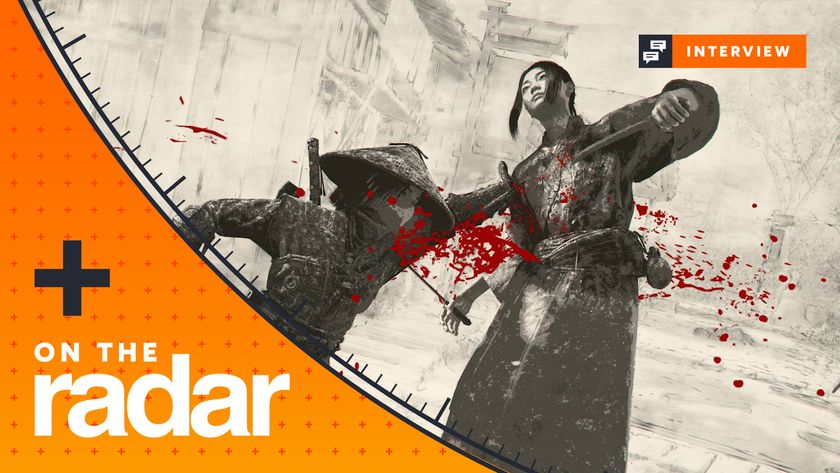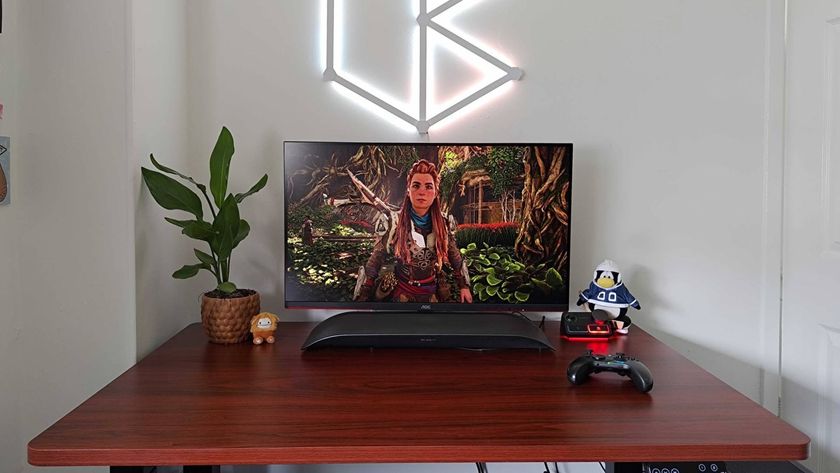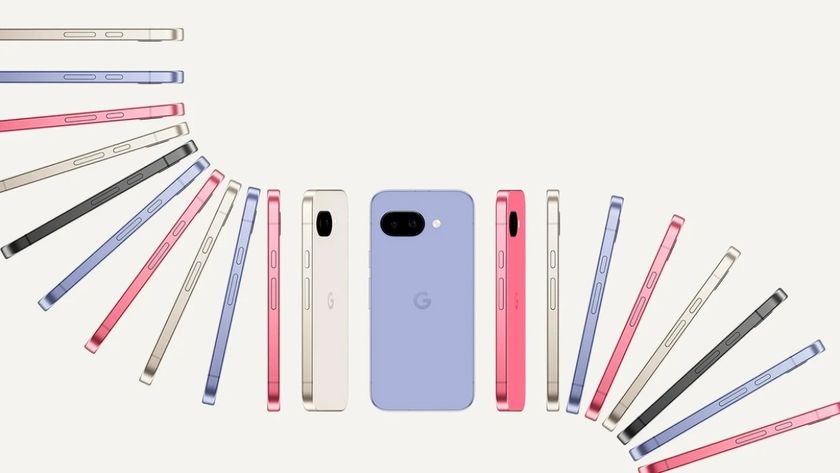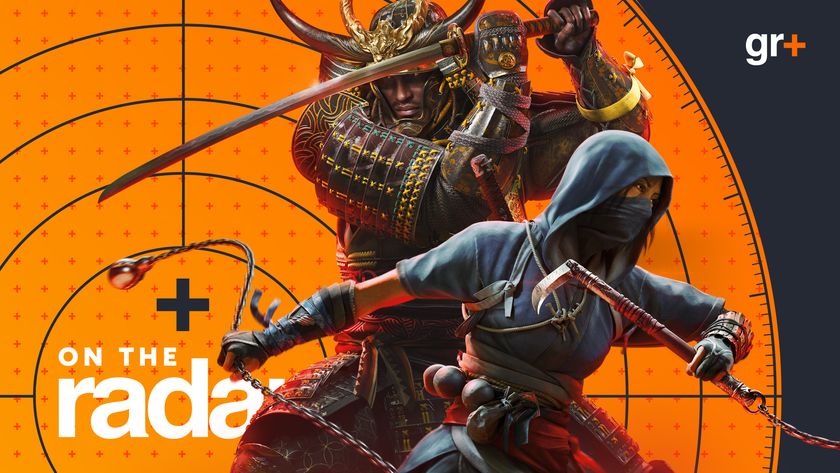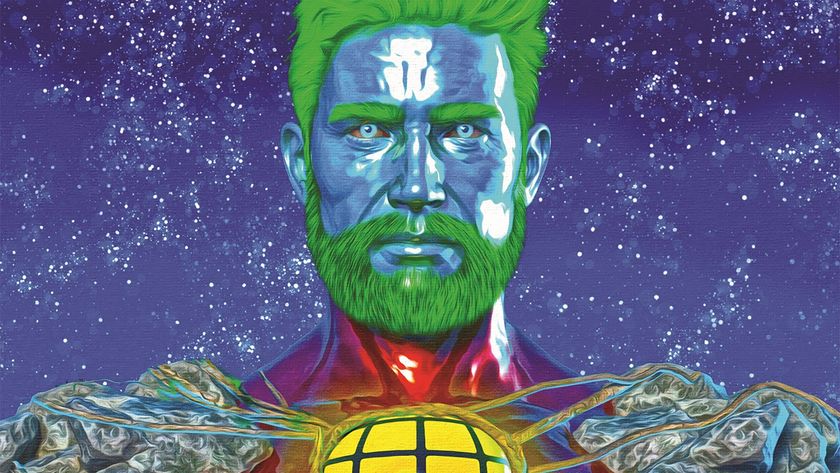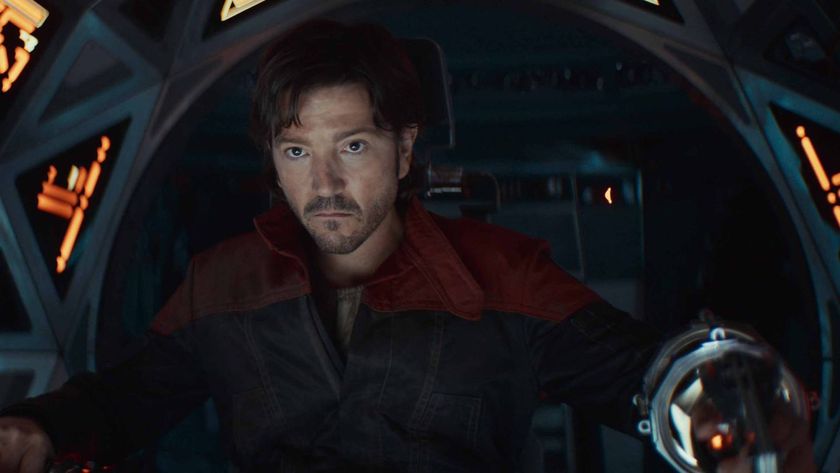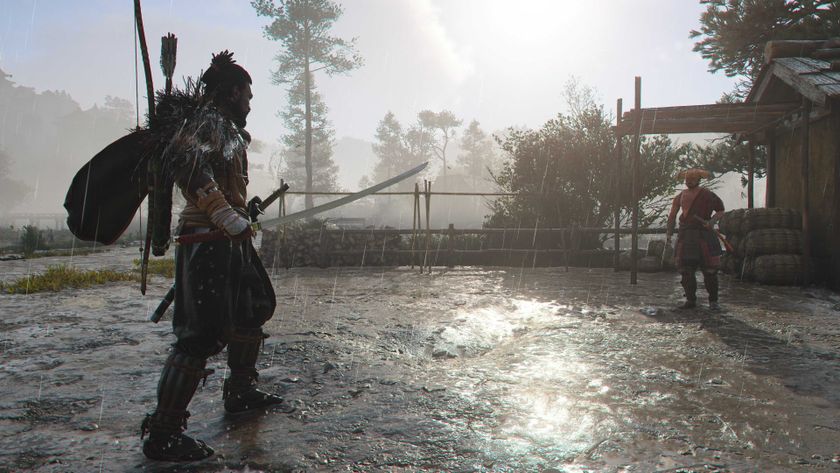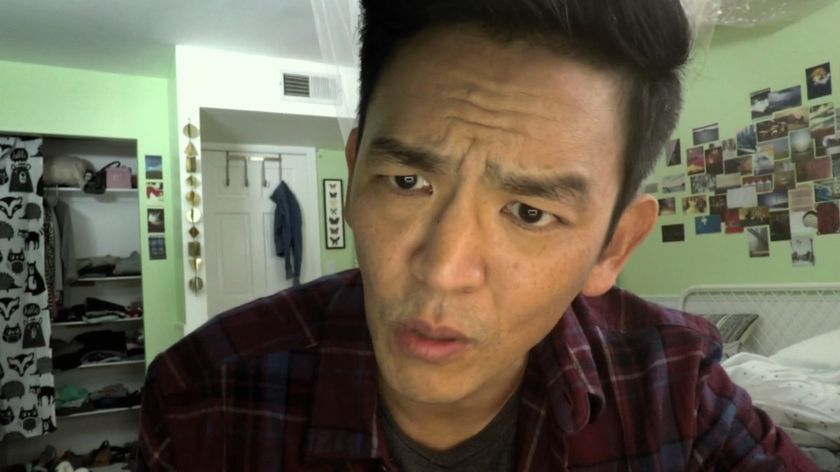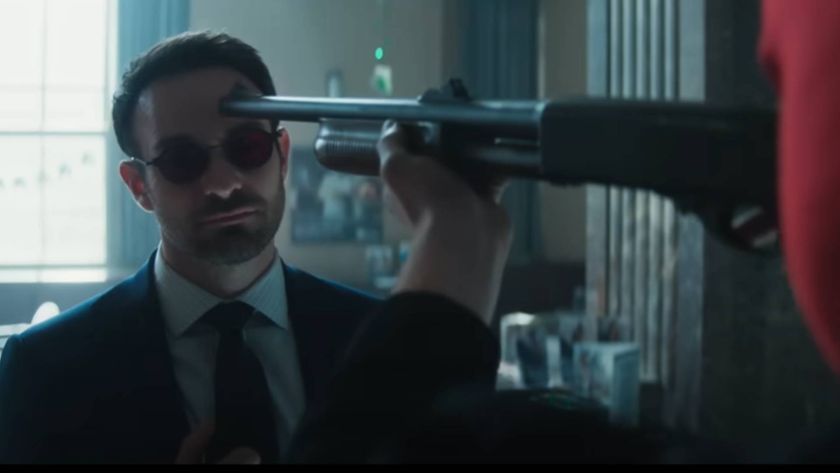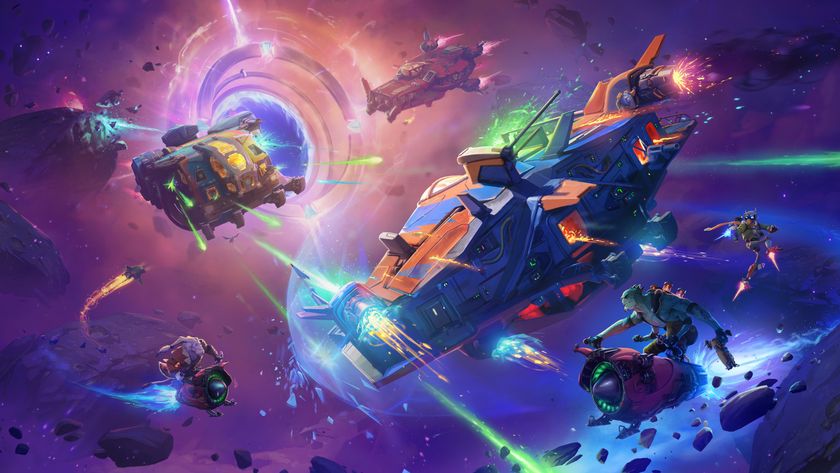Indiana Jones and the Dial of Destiny ending explained: your biggest questions answered
We break down the twists and turns of that wild Indy 5 ending
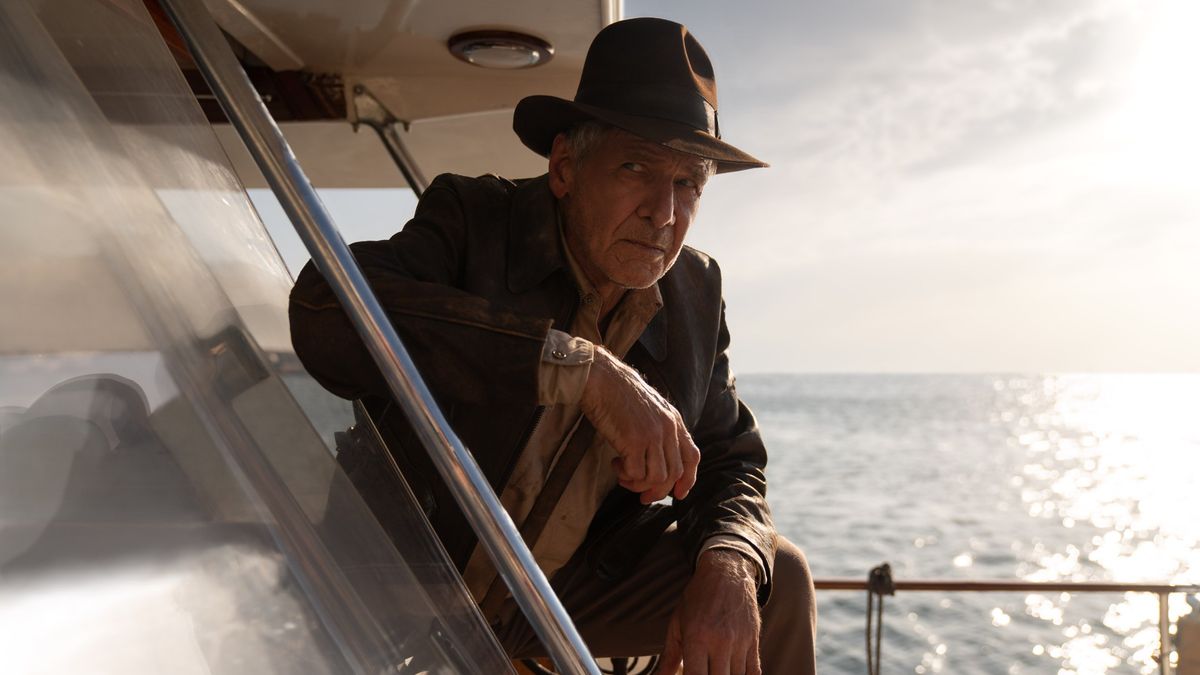
The Indiana Jones and the Dial of Destiny ending certainly goes wild, with that titular Dial taking the plot in a very unexpected direction. With so much going on, you might have missed a few key details – but that's where we come in.
With the movie now in US theaters, we've broken down the major twists and turns in the Indiana Jones and the Dial of Destiny ending and explained exactly what happened, answering your biggest and most burning questions in the process.
Dial of Destiny sees Harrison Ford return to his iconic role for one last adventure, while newcomers to the cast include Phoebe Waller-Bridge as Indy's goddaughter Helena Shaw, Mads Mikkelsen as the sinister Dr. Voller, Antonio Banderas as Indy's pal Renaldo, and Toby Jones as Helena's father, Basil Shaw.
It should go without saying, but the following contains major spoilers for Indiana Jones 5. Turn back now if you haven't seen the movie yet! For everyone else, destiny awaits…
Indiana Jones 5 ending explained
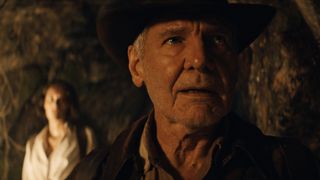
The Indiana Jones and the Dial of Destiny ending gets pretty complicated once time travel enters the equation. After tracking both halves of the Antikythera down across the globe, Indy (Harrison Ford), Helena (Phoebe Waller-Bridge), and Teddy (Ethann Bergua-Isidore) are discovered by Dr. Voller (Mads Mikkelsen) and his henchmen.
Indy gets shot, but it's not a fatal wound. He's taken captive by Voller and co. and ends up at an airbase. Voller then explains his sinister plan: he intends on using the Dial to go back in time to August 20, 1939, in Munich, Germany. There, he will kill Adolf Hitler and replace him, with Voller believing that he himself could win the Second World War instead.
Meanwhile, Helena sneaks onboard the plane carrying Indy, while Teddy steals a plane of his own.
Sign up for the Total Film Newsletter
Bringing all the latest movie news, features, and reviews to your inbox
As the Nazis set the Dial to travel back in time, Indy, watching items in the plane move across the ground, comes to a realization: Voller hasn't accounted for continental drift (that's essentially the term for the continents shifting as tectonic plates move). Since Archimedes had no way of knowing about continental drift (it wasn't observed until the 20th Century), he couldn't have factored it into the Dial. That means Voller's calculations are off, and his coordinates are wrong. Voller wavers, then at the last moment tries to stop the plane – but it's too late.
The plane emerges through the portal into… ancient Sicily. The siege of Syracuse in 212 BC, to be specific. In real life, that's when Archimedes was killed by a Roman soldier. Things go differently for him in the movie, though, as it's revealed that he built the Dial specifically to bring help from the future to stop the siege.
Helena and Indy manage to escape Voller's plane together with a parachute, while the Roman fleet shoots it down with giant bolts. The impact kills everyone onboard, and Archimedes comes across Voller's badly burned body and takes his watch (which could well be the very same watch Indy and Helena found in his tomb). He also finds the completed Antikythera.
Indy and Helena get away from the action, but Indiana reveals that he plans on staying behind. He's been studying history his whole life, but, if he stays, he'll get to actually live it. Helena isn't pleased with this, though – then Archimedes joins the fray. He and his companion save Indy and Helena from a Roman soldier, then Archimedes hands back the Dial. Indy tells Archimedes he plans on staying behind, but Helena still objects. The argument ends with Helena punching her godfather in the face, knocking him out.
Later, Indy wakes back up in the right time period. "You're meant to be here, Indy," Helena tells him, to which he replies: "For who?" But then, Marion Ravenwood (Karen Allen) enters the apartment. She and Indy were going through a divorce following the death of their son, who was killed in action in Vietnam.
"Someone told me you were back," Marion says. "Are you back, Indy?" The duo then repeat the "Where doesn't it hurt?" moment from Raiders of the Lost Ark, in a romantic reconciliation.
The film ends with Indy's famous hat hanging outside the apartment – though, right before the screen goes to black, Indy's hand shoots outside to grab it again.
What is the Dial of Destiny?
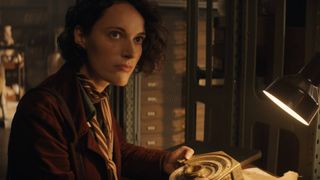
The Dial of Destiny, AKA the Antikythera, is a time-traveling device built by the mathematician Archimedes, who lived in ancient times. Archimedes split it into two parts, however, but left a clue to the location of the hidden second half. When fit back together, the Dial can be used to locate fissures in time and visit the past.
But, it comes with a catch. It turns out Archimedes built the dial only to bring himself help from the future during the siege of Syracuse, Sicily when his home was under attack from invading Roman forces. That throws a wrench into Voller's sinister plans, to say the least.
You may be surprised to learn that the Antikythera is in fact a real, historical device – though it (probably) wasn't used to go back in time. The Antikythera mechanism was discovered in 1901 on a Roman shipwreck near the Greek island of Antikythera, much like in the movie. The device, now seen as the first analog computer, was a clockwork model of the solar system which could be used to track and predict astronomical positions and events. No one knows for sure who invented it in real life, though Archimedes is one of the possible candidates.
Who is Archimedes?
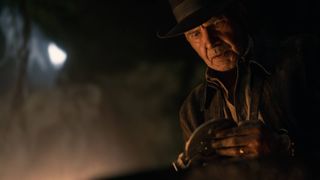
Archimedes is a major character in Dial of Destiny, but he was also very much a real person. As depicted in the film, he was an inventor and mathematician from Syracuse, living from 287 BC to 212 BC, who was lightyears ahead of his time. His inventions helped to defend Syracuse during the siege.
But, unlike his fictional counterpart, Archimedes was actually killed by a Roman soldier during the siege of Syracuse. We're going to assume that's because he didn't really invent time travel and so couldn't call Indiana Jones for help.
Why does Voller want the Dial?
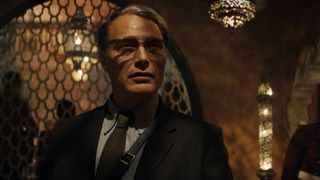
Dr. Voller goes to great lengths to get hold of the Antikythera, beginning in the flashback at the start of the film. He plans on using it to travel back in time to Munich, Germany on August 20, 1939, where he intends to kill Adolf Hitler. But, Voller isn't doing this for the good of humankind – instead, he plans on replacing Hitler, believing he understands why the evil dictator lost the Second World War. Voller intends to lead the Nazis himself and win the war, but, thankfully, his plan fails and he is killed when his plane is shot down in the siege of Syracuse.
What is continental drift?
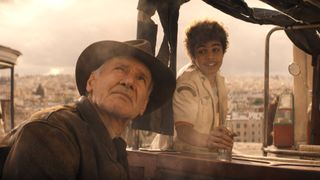
Put simply, continental drift is the movement of the continents across the planet, caused by shifting tectonic plates. As Indy points out, this wasn't observed until well after Archimedes's time, so there's no way he could account for it with the Antikythera. The movements of the continents over millennia means that Voller's calculations are all wrong – but it doesn't matter anyway, because Indy and Helena discover that Archimedes built the Antikythera solely with the intention of getting help in the siege of Syracuse. That means Voller couldn't go back to Nazi Germany even if his calculations were perfect.
Does Indiana Jones die?
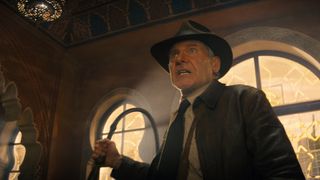
Indy is shot by Voller and spends much of the third act wounded. When all is said and done in Syracuse, Indy tells Helena that he wants to stay behind. After all, as an archaeologist, he's studied ancient history all his life – and now he gets to experience it firsthand. Helena is seriously against this plan, though, insisting that Indy returns home, but he's just as stubborn. For a moment, it really looks like Indy is going to stay behind, getting his own bizarre happy ending – and effectively killing him off, since he wouldn't exist in the present day anymore.
Ultimately, though, Helena punches her godfather in the face, knocking him out, and gets him home offscreen. We have to say, we never thought we'd be this happy to see Indiana Jones get punched.
Who is Helena Shaw?
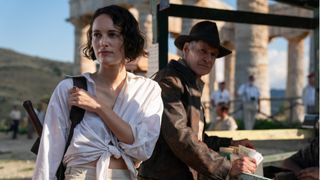
Helena is none other than Indy's goddaughter, but since he hasn't seen her for some time, he doesn't recognize her when she shows up. She's the daughter of Basil Shaw, who was driven mad by his quest for the Dial. When Helena reconnects with Indy, she's actually looking for the Antikythera to sell it at an illegal auction.
What happened to Basil Shaw?
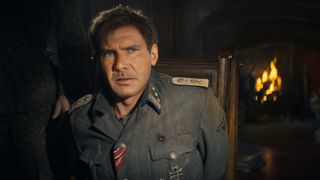
Basil was a friend of Indy's, seen in the opening flashback and in another flashback later in the movie. After he and Indy stumbled across one half of the Antikythera on the Nazi train, Basil became obsessed with the Dial and believed it could be used for time travel. His fixation on the Dial led to Indy taking it (or one half of it, anyway) from his friend – which is also the last time he saw Helena, until she reappeared much later.
Who was that at the end?
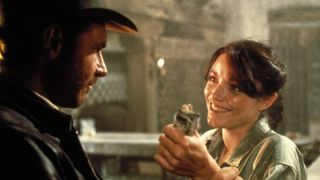
At the end of the movie, when Helena tells Indy he's where he's meant to be, he heartbreakingly asks, "For who?" Cue the entrance of one very special person in particular: it's none other than Karen Allen's Marion Ravenwood! She first appeared in Raiders of the Lost Ark; in that film, she and Indiana Jones were revealed to have had a relationship in the past, though he left her heartbroken. They reconnected in the course of the movie, but she wasn't seen again until Kingdom of the Crystal Skull. In that movie, it was revealed that she and Indy actually had a son together – Shia LaBeouf's Mutt (real name Henry).
Indy and Marion got married in Kingdom of the Crystal Skull, but in Dial of Destiny, we learn that they're in the process of divorcing following the death of their son. Marion's return, though, seems to be an emotional happy ending for the adventurer.
What happened to Indiana Jones's son Mutt?
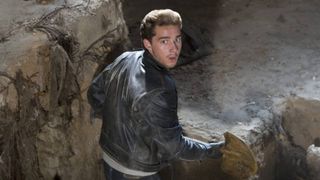
Mutt does not appear in Dial of Destiny, though he's seen in photographs. Indy explains to Helena that his son died after enlisting in the army, so presumably Mutt was killed in action in Vietnam. Tragically, Indy says Mutt only signed up to annoy him.
Does Short Round appear?
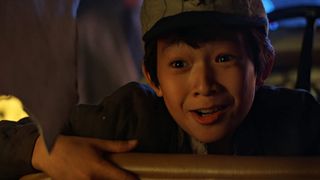
Despite all the attention Ke Huy Quan has been getting lately – and those heartwarming moments with Harrison Ford – Short Round does not have any type of role in Dial of Destiny. We're still holding out hope we'll see him again someday, though.
Will there be an Indiana Jones 6?
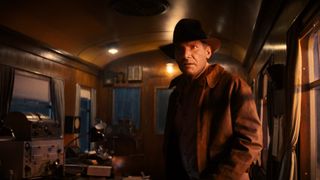
The Dial of Destiny ends on a very final note – even if Indy grabbing his hat might suggest he's still up for the occasional adventure or two. We can safely assume we won't be seeing those escapades, though, since there is no sequel set-up, no post-credits scenes, and Harrison Ford has been very clear that this is his final time playing Indiana Jones. Instead, we'll have to content ourselves with imagining Indy out there on all his future adventures.
That's a wrap on the Indiana Jones and the Dial of Destiny ending explained. For even more on the movie, check out our other pieces through the links:
- Our Indiana Jones and the Dial of Destiny interview with the cast and director
- Harrison Ford and James Mangold's favorite Dial of Destiny memory
- Kathleen Kennedy and Frank Marshall look back on over 40 years of Indiana Jones
- Our Indiana Jones and the Dial of Destiny Cannes interview
- Why Harrison Ford doesn't want to reflect on his old movies
- Mads Mikkelsen is desperate to play a zombie
- Mads Mikkelsen recalls meeting Harrison Ford
- Does Indiana Jones and the Dial of Destiny have a post-credits scene?
- Kathleen Kennedy reveals the Rey and James Mangold Star Wars movies are linked

I'm a Senior Entertainment Writer here at 12DOVE, covering all things film and TV for the site's Total Film and SFX sections. I previously worked on the Disney magazines team at Immediate Media, and also wrote on the CBeebies, MEGA!, and Star Wars Galaxy titles after graduating with a BA in English.
